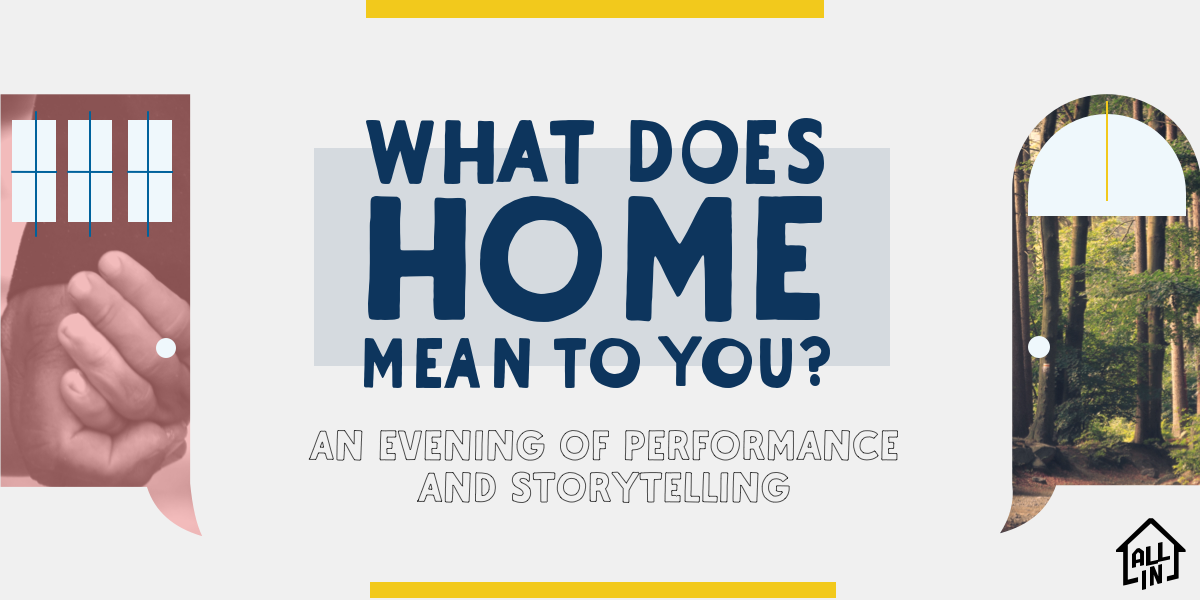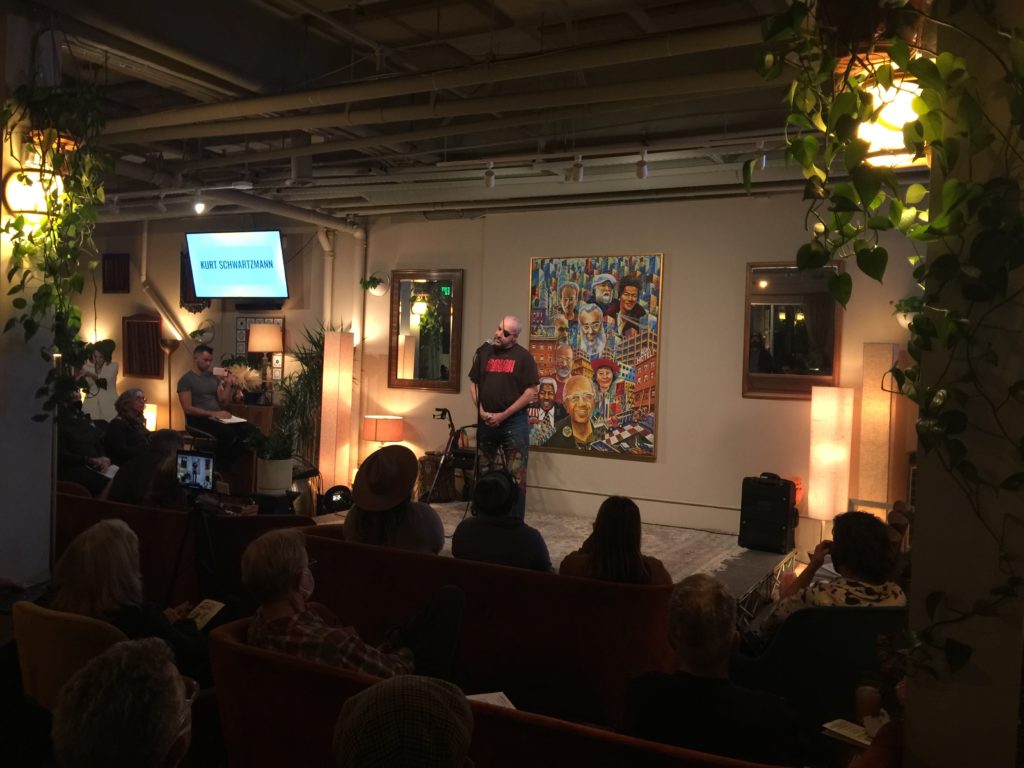Learning from Lived Experience: Reflections on the Meaning of Home

A couple weeks ago, we donned our masks and flashed our proofs of vaccination to welcome guests for the All In campaign’s first in-person event in two years: “What Does Home Mean to You?” In keeping with our commitment to center the voices of the unhoused community, we asked six individuals with lived homelessness experience to reflect on this question for our audience.
We heard stories of finding refuge on Muni buses and among a community of supportive people. We imagined together the emotional toll of living in a windowless 8’x10′ SRO—permanently. Thanks to the magic of online live streaming, we also have a recording in case you missed it or would like to relive the night.
Planning the event for the past couple months, I realized the night was shaping up to bring together my own experiences living in San Francisco and working on solutions to homelessness. I know one of the performers, Jesse, from his work with Tipping Point’s Community Advisory Board, so it was a treat to see a more personal, creative side as he shared thoughts on gentrification in his life and in our city.

Kurt Schwartzmann on stage during our event.
Working with Larkin Street’s performing arts program brought me back to my days working with youth experiencing homelessness and the importance of community for people during the period of transition into adulthood. And Kurt’s story stuck with me because of my own memories riding San Francisco’s Muni transit system.
“It’s 3am in the morning. It’s cold. It’s dark and windy. I’ve been wandering the streets for days. I feel like a rat in a maze. always moving, but going nowhere. I wander over to a bus stop out in the Excelsior. I sit down and rest.
Moments later a bus pulls up and the doors open. The bus driver says, “Come on board.” And I explained to her that I have no money for the fare. None.
And she said, “Come on aboard anyway. I’ve got to drive, so you can keep me company.”
It was the first positive communication I had had with another human being for weeks. I looked her in the eyes. And I said, “Thank you.” And I boarded her bus.
I walked to the back of the bus and sat down. I was so thankful to be inside rather than outside. It was warm and comfortable and safe. I looked around the bus and there were other folks just like me.”
– Excerpt of Kurt’s Story
For many years, I too rode the Muni N line that Kurt mentioned for my commute to downtown SF. But for me, seeing the N train crest the hill on Irving Street brought a sense of dread and frustration, not the sense of hope and relief that Kurt described. I hated squeezing my way onto a train packed with people at rush hour, and I’d brace myself for the inevitable delays or mechanical breakdowns that would leave us stuck on the rails unexpectedly. Because of my privilege, I failed to realize that being indoors—even on a public bus—could actually bring a sense of relief. Listening to Kurt’s story, I realized that I didn’t have to ride public transit, I was able to because I was lucky enough to have a home and a job to travel between every day.
I had another reality check watching the Faithful Fools bring the act of squeezing your life into an 8’x10’ SRO unit onto the stage at Manny’s. The first thing we put in place was a twin bed, and that took up one whole stretch of the space. Then, the audience was asked to fill the space with the things they thought they’d need. A lamp, a fridge, a microwave, a hot plate, dishes, a place to put groceries, a dresser, a trashcan, a family picture, a walker, a pet—and we knew we were forgetting things. But that space was chock full already, and we barely had space left to open the door.
Taking part in that exercise and hearing the other experiences that were shared highlighted how much I still have to learn about what our unhoused neighbors face every day. I thought about all the places I’d lived and the things I’ve been able to fill my home with. I thought about the fact that I could find another place to live if my needs changed, an option not afforded to residents living in permanent supportive housing SROs. Opening ourselves up and hearing what the realities have been for people who are closest to the issue shows how much we still don’t know about what they’ve experienced. And this knowledge gives us a chance to be better advocates for the solutions needed in our community.
I left the event humbled by the six people who so courageously and generously shared their stories with us and grateful for the 50+ audience members who took the time to listen and learn from the experiences of each storyteller. We didn’t plan for a formal Q&A, but our emcee Manny Yekutiel invited the audience to share reflections. One attendee chimed in with the million-dollar-question: “what can we do?”
It took me a while to fall asleep that night, partly from the adrenaline of event planning but also because the “what can we do?” question nagged at me – even after my years of working in this field. How can we move more people off the streets and into homes faster? How can we do a better job of seeing, hearing, and respecting our unhoused neighbors?
I’m lucky that All In creates a community of like-minded San Franciscans who ask themselves the same questions. Now, it’s up to us to capitalize on this collective energy and spread it throughout our neighborhoods. We must be diligent in learning from the experiences and stories of our neighbors. We must stay vigilant and speak up for housing with our elected officials and other community leaders. We must counter fear and resistance, using knowledge and stories of lived experience to remember that, at the core, we are talking about people who need a home.
Our campaign relies on pledge signers to build a movement of San Francisco residents committed to supporting our unhoused neighbors, and my pledge to you is making sure the campaign provides the information and resources to do just that.

